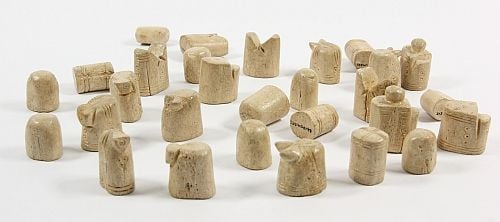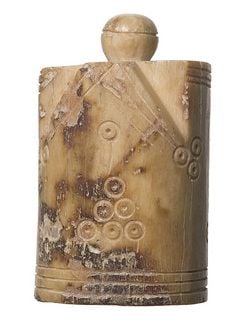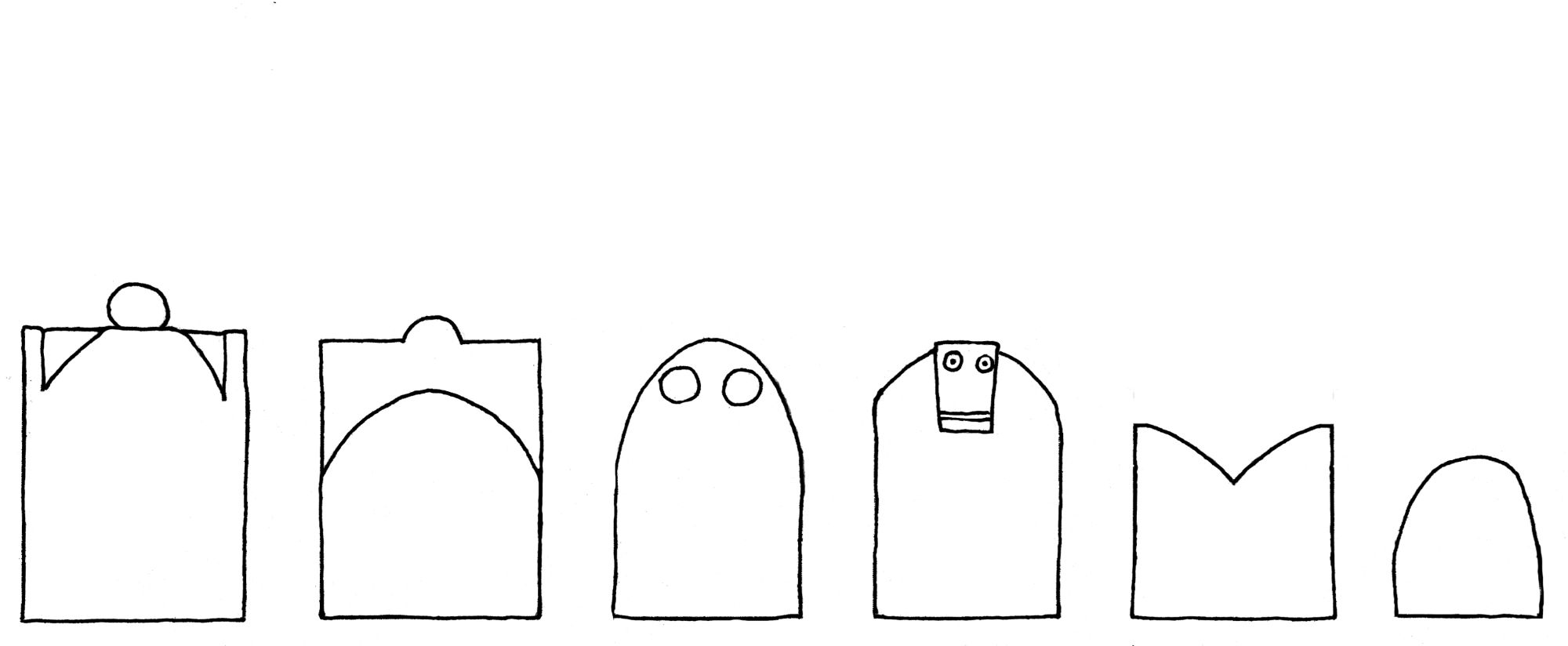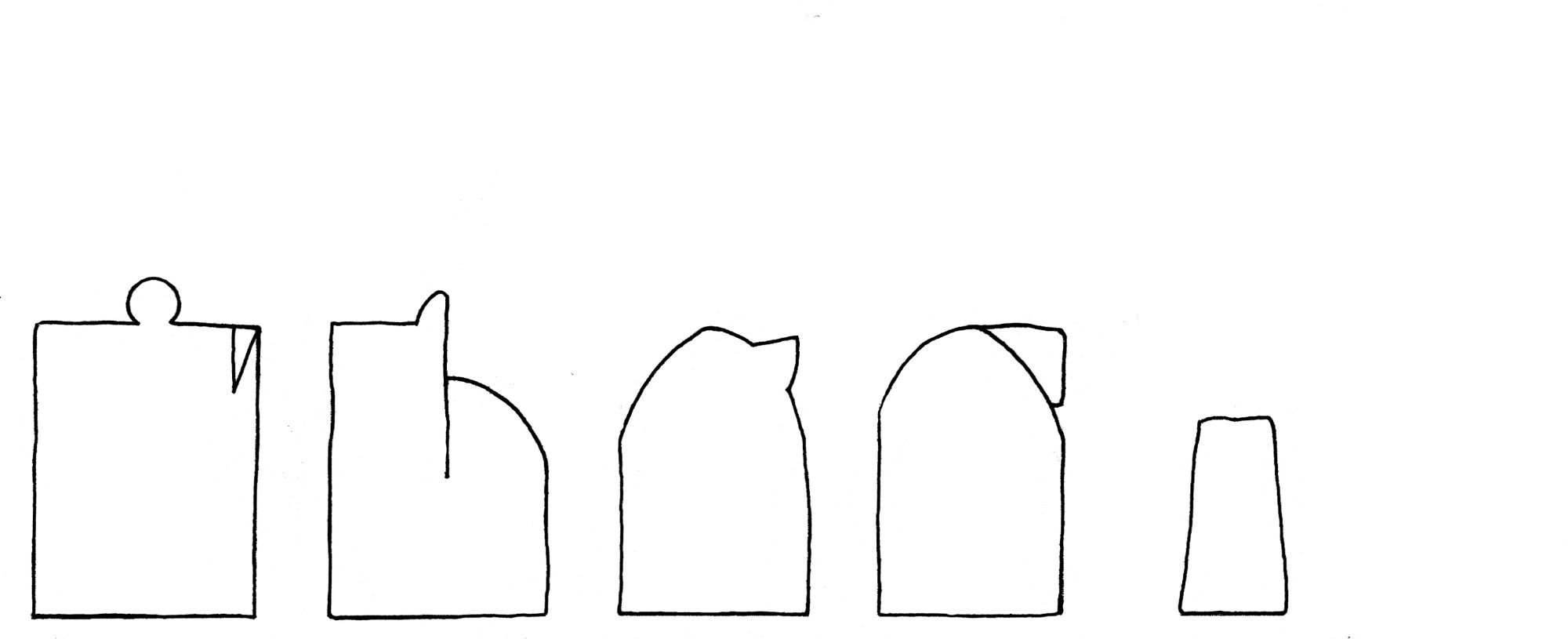Early medieval chess pieces
The game of chess arrives in Europe in the ninth or tenth century, spreading rapidly. Possibly because the material of manufacture was stone, ceramic, glass, bone, walrus ivory or antler a number of these early pieces survived, and are now in museums across Europe and America.

Presumably wooden pieces would also have been common, though very few, from this early period, have survived. Many later medieval pieces were turned and carved from wood and, though these are well illustrated in a number of manuscripts, the pieces themselves have not survived.
The earliest known chess pieces in Europe represent a battle between two Indian armies, each comprising the king and his vizier (later to become the queen), the elephants (bishops), horses (knights), chariots (rooks) and the infantry (pawns). The king and queen or vizier, in early sets, are represented by cushioned thrones, the king’s larger than that of the queen or vizier. The bishop is a tall rounded dome with two protrusions representing the tusks of the elephant, The knights are similar in shape, but with a stylised horse’s head on one side at the top. The rook is rectangular with two points one on either side, sloping down to a central valley, representing the shape of the chariot. Pawns are generally small domes. There is some variation across all the surviving pieces, though this is minor and most pieces are easy to recognise.

The form of the king varies a little, with some examples, especially later finds, having the rounded cushion pushed higher so that it reaches the top and becomes represented by two triangular slits on either side. The king may or may not have a round ball on top. Pieces may be ornamented with incised lines, lathe-turned in some cases, though in many the pieces are of carved bone. Ring and dot ornamentation is common.

There are a number of highly-carved chess pieces from this period which may or may not have been part of actual chess sets. The most famous outlier of the early medieval form are the Lewis chess sets, found in Scotland but most probably made in Trondheim in Norway. These are unusual in being highly carved and fully playable sets, but are unrepresentative of the utilitarian chess sets commonly used in the early medieval period.
The form of the early medieval king and queen seems to be gone by the thirteenth or fourteenth century, when turned forms begin to appear in manuscripts. The early medieval bishop and rook survive as stylised forms on pedestals for several hundred years: the bishop into the early seventeenth century and the rook to the mid-sixteenth.


